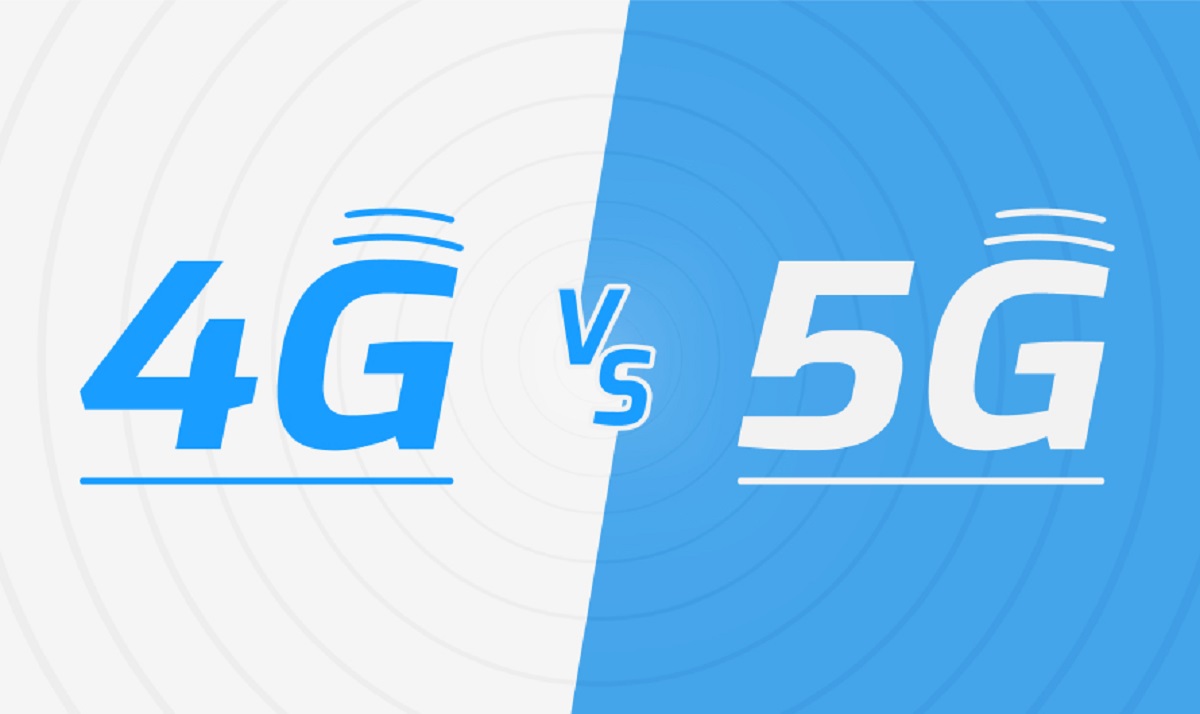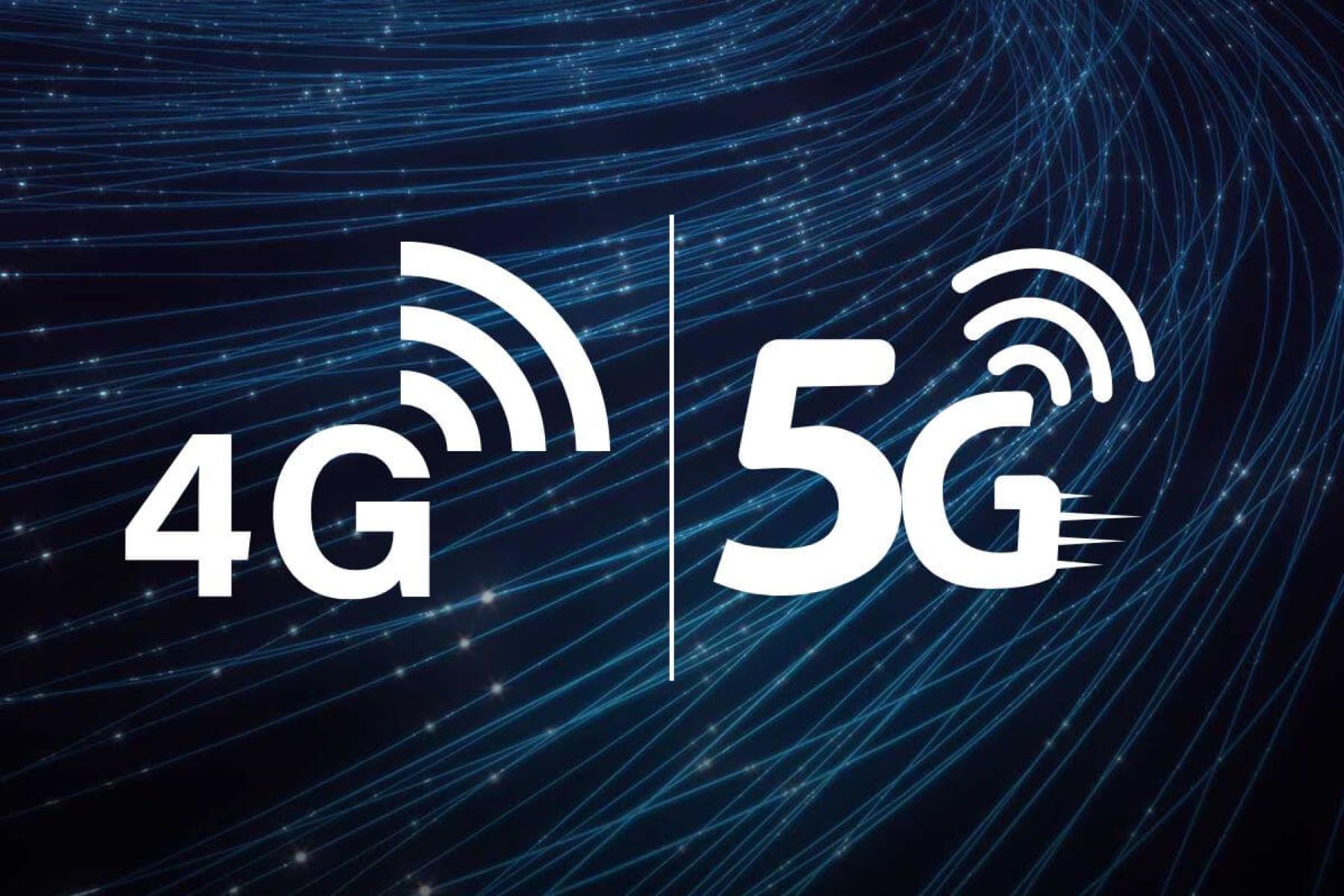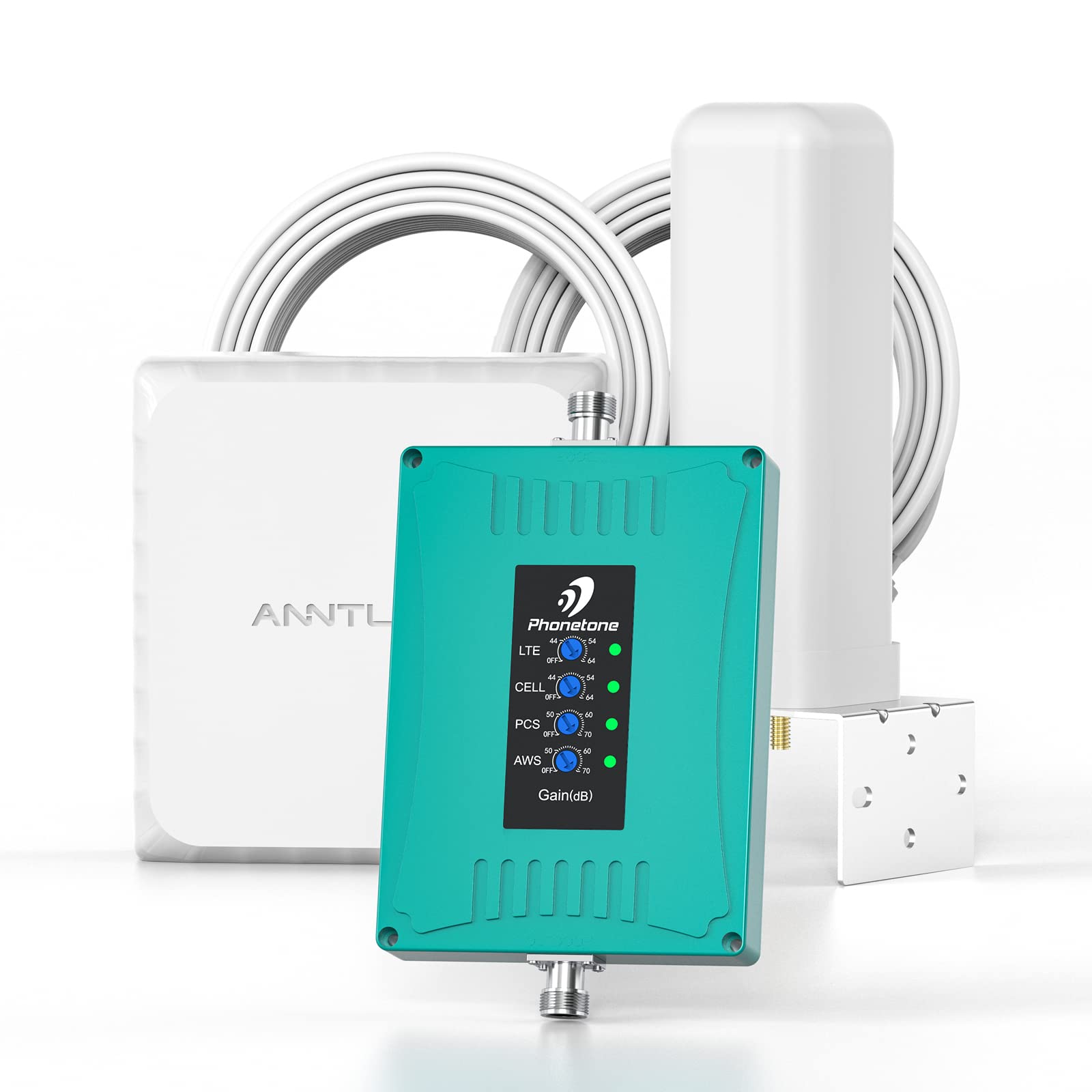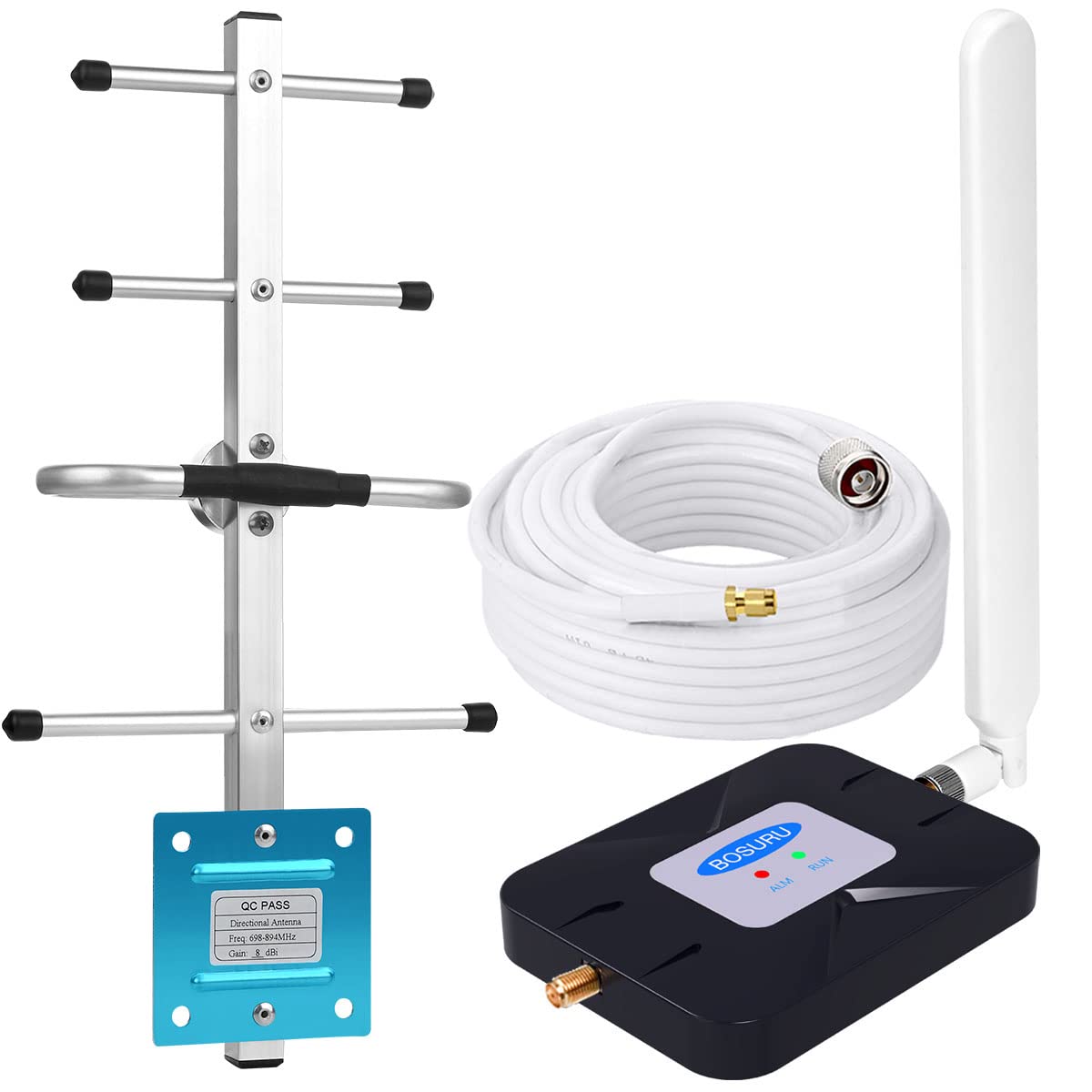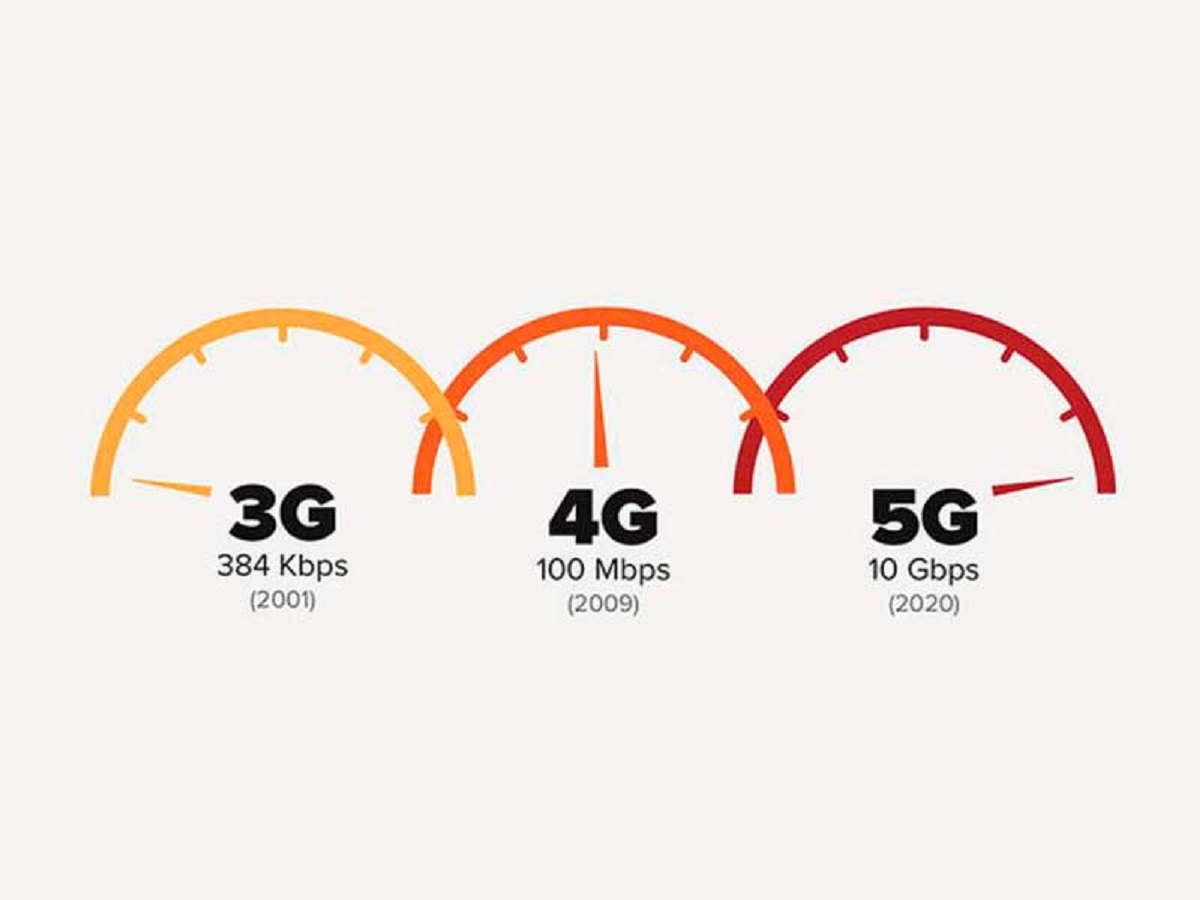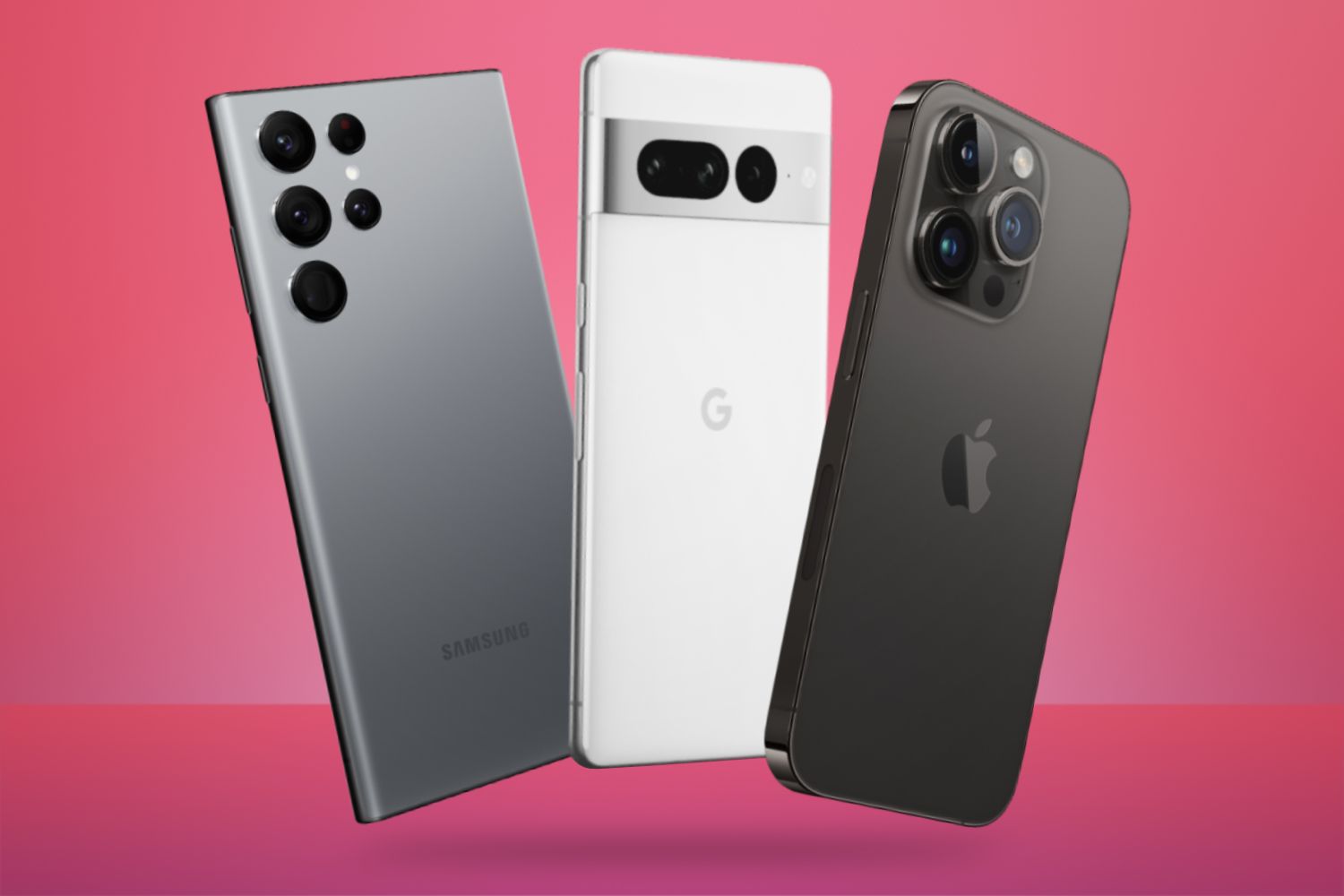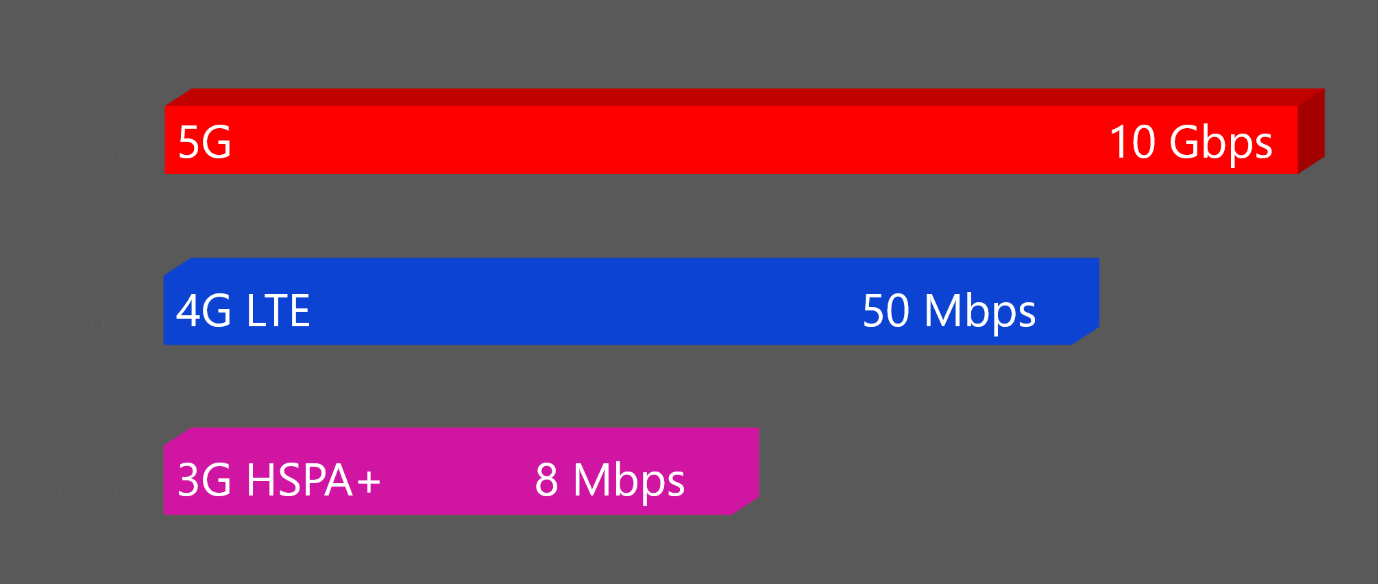Introduction
The evolution of technology has brought about significant advancements in the field of wireless communication. From the introduction of 2G to the widespread adoption of 4G, each generation has offered improved speed and performance. Now, the next leap forward is on the horizon: 5G, the fifth generation of wireless technology.
5G holds the promise of revolutionizing the way we connect and interact with the digital world. With its lightning-fast speed, lower latency, increased capacity, and enhanced user experience, 5G is set to redefine the possibilities of communication. It is not just an incremental improvement over its predecessor, but rather a transformative technology that will unlock a whole new range of applications and services.
One of the most notable advantages of 5G over 4G is its faster speed. While 4G provides impressive download and upload speeds, 5G takes it to a whole new level. With peak speeds projected to reach up to 20 Gbps, 5G is expected to be up to 100 times faster than 4G. This means that downloading large files, streaming high-definition videos, and accessing cloud-based applications will become almost instantaneous.
Another key benefit of 5G is its significantly lower latency. Latency refers to the time it takes for data to travel between devices. 4G networks typically have a latency of around 50 milliseconds, while 5G boasts an incredibly low latency of just 1 millisecond. This near real-time response will greatly enhance applications that require fast and reliable connectivity, such as online gaming, autonomous vehicles, and remote surgery.
In addition to speed and latency improvements, 5G offers increased capacity, which means that it can support a much larger number of connected devices simultaneously. This is especially advantageous in crowded areas or during events where multiple users are competing for bandwidth. With 5G’s superior capacity, network congestion will be greatly reduced, ensuring a seamless and uninterrupted experience for all users.
Signal strength is another area where 5G outshines its predecessor. 4G signals can struggle to penetrate walls and other physical barriers, leading to weaker connections in certain areas. However, 5G utilizes higher-frequency bands, allowing for better signal propagation and improved coverage. As a result, even in densely populated urban areas or remote rural regions, users can expect reliable and robust connectivity.
5G is not only about faster speeds and stronger signals, but it also offers an enhanced user experience. The combination of fast speed, low latency, and increased capacity means that users can enjoy seamless streaming, lag-free video calls, and smooth navigation on their devices. This improved experience opens up a world of possibilities for applications such as virtual reality, augmented reality, and immersive gaming.
One of the key advantages of 5G is its ability to support a wide range of Internet of Things (IoT) devices. IoT devices, such as smart home appliances, wearables, and industrial sensors, require a reliable and robust connectivity solution. 5G provides the necessary infrastructure to connect and manage a vast number of IoT devices, enabling smarter automation, efficient resource management, and improved overall efficiency.
Furthermore, the introduction of 5G will pave the way for advancements in virtual reality (VR) and augmented reality (AR). With 5G’s high-speed connections and low latency, VR and AR experiences can become more immersive and interactive. Users will have access to real-time, high-resolution content, making virtual meetings, gaming, and educational experiences even more lifelike and engaging.
Last but not least, 5G brings about a significant improvement in video streaming quality. With its faster speeds and lower latency, users can stream high-definition and even ultra-high-definition content without any buffering or lag. This means smoother playback, sharper visuals, and an overall more enjoyable streaming experience for users.
Faster Speed
One of the most compelling advantages of 5G over 4G is its remarkable increase in speed. While 4G networks have already offered impressive download and upload speeds, 5G takes this to a whole new level. With projected peak speeds of up to 20 gigabits per second (Gbps), 5G is set to be up to 100 times faster than its predecessor.
Imagine being able to download a high-definition movie in a matter of seconds or stream 4K videos without any lag or buffering. With 5G’s lightning-fast speed, these scenarios will become a reality. Whether it’s for entertainment purposes or accessing data-intensive applications and services, the improved speed of 5G will revolutionize the way we experience the digital world.
But how does 5G achieve such incredible speeds? One of the key factors is the use of higher-frequency radio waves, known as millimeter waves (mmWave). These waves have a shorter wavelength compared to the lower-frequency waves used by 4G networks. As a result, they can carry more data at a faster rate.
Additionally, 5G utilizes advanced antenna technology, including Massive MIMO (Multiple-Input Multiple-Output) systems. These systems consist of multiple antennas that work together to transmit and receive data more efficiently. By using beamforming techniques, 5G can direct the signal directly to the intended device, reducing interference and optimizing speed and reliability.
The faster speed of 5G will have a profound impact on various aspects of our lives. It will enable faster downloads and uploads, making large file transfers, such as documents or multimedia content, nearly instantaneous. This will enhance productivity, allowing professionals to collaborate seamlessly and share information effortlessly.
Furthermore, the improved speed of 5G will benefit industries such as healthcare, manufacturing, and transportation. For example, in healthcare, doctors will be able to transmit large medical files, such as MRI scans, to specialists in real-time, facilitating faster diagnoses and treatment decisions. In manufacturing, robots and machines can communicate with each other and exchange data at high speeds, optimizing production efficiency. And in transportation, autonomous vehicles can rely on 5G’s fast connectivity to process vast amounts of data and make split-second decisions for a safer and more efficient driving experience.
Overall, the faster speed of 5G will unlock endless possibilities in our increasingly connected world. From seamless high-quality video streaming to faster data transfers and improved real-time communication, 5G’s speed will transform various industries, enhance productivity, and enrich our digital experiences.
Lower Latency
In addition to its faster speed, 5G brings a significant reduction in latency compared to 4G networks. Latency refers to the time it takes for data to travel between devices, and it plays a crucial role in determining the responsiveness of applications and services.
While 4G networks typically have a latency of around 50 milliseconds (ms), 5G networks boast an incredibly low latency of just 1 ms. This near real-time response is a game-changer for applications that require fast and reliable connectivity, such as online gaming, autonomous vehicles, and remote surgery.
Imagine playing an online multiplayer game with virtually zero delay. With 5G’s ultra-low latency, gamers can experience truly immersive and responsive gameplay, free from any noticeable lag. This will open up new possibilities for real-time multiplayer experiences, virtual reality gaming, and eSports competitions.
Moreover, the low latency of 5G will have a profound impact on autonomous vehicles. With self-driving cars relying on real-time data to make split-second decisions, low latency is crucial for ensuring safe and efficient navigation. 5G will enable vehicles to communicate with each other and with smart infrastructure with minimal delay, enhancing road safety and enabling more advanced autonomous features.
In the healthcare industry, low latency is of utmost importance in telemedicine and remote surgery. With 5G, doctors can remotely perform surgeries in real-time with exceptional precision. The low latency ensures that there is no delay between the surgeon’s actions and the response of the robotic surgical instruments, enabling delicate procedures to be conducted remotely with incredible accuracy.
Another area that will benefit from 5G’s low latency is the Internet of Things (IoT). With billions of connected devices expected by 2025, low latency becomes critical for IoT applications that require fast response times. For example, in industrial settings, IoT devices can communicate with each other and with a central control system in real-time, facilitating efficient automation and optimization of operations.
Overall, the lower latency of 5G will unlock a range of innovative and transformative applications. From online gaming and autonomous vehicles to telemedicine and IoT, the low latency of 5G will enable real-time communication, faster decision-making, and seamless connectivity, revolutionizing various industries and enhancing user experiences.
Increased Capacity
One of the key advantages of 5G over 4G is its increased capacity, which refers to the ability of the network to support a larger number of connected devices simultaneously. With the proliferation of smartphones, tablets, smart home devices, and IoT devices, the demand for data connectivity has skyrocketed. 5G offers the necessary infrastructure to meet these growing demands.
4G networks have limitations when it comes to accommodating a large number of users, especially in densely populated areas, stadiums, or concert venues where network congestion can be a major issue. This congestion can result in slower speeds, dropped connections, and overall poor user experience. However, 5G’s increased capacity effectively addresses these challenges.
By utilizing advanced technologies such as network slicing and dynamic spectrum sharing, 5G can allocate network resources more efficiently. Network slicing allows the network to be divided into multiple virtual networks, each tailored to specific requirements. This enables the network to provide dedicated resources and customized services to different applications and devices.
Additionally, dynamic spectrum sharing enables 5G to share the same spectrum with 4G networks, thereby maximizing the use of available radio frequencies. This ensures that both 4G and 5G users can coexist seamlessly, even in areas where 5G coverage is still being deployed.
The increased capacity of 5G will have significant implications across various industries. In transportation, for example, the ability to connect a vast number of vehicles simultaneously is crucial for the success of connected and autonomous vehicles (CAVs). With 5G’s increased capacity, CAVs can communicate with each other and with smart infrastructure in real-time, enabling safer and more efficient transportation systems.
In smart cities, 5G’s increased capacity will support a multitude of connected devices and sensors, enabling efficient monitoring and management of critical infrastructure, energy systems, and public services. This will lead to improved sustainability, resource optimization, and enhanced quality of life for residents.
The increased capacity of 5G also opens up new possibilities in entertainment and media industries. With more users able to connect simultaneously, live streaming of events, concerts, and sporting matches can reach a wider audience without experiencing any network congestion. This allows for a more immersive and interactive experience for viewers, regardless of their physical location.
Overall, the increased capacity of 5G will ensure a smoother and more reliable user experience, even in high-demand situations. It will enable seamless connectivity, support a larger number of devices, and drive innovation across various sectors, transforming the way we live, work, and interact with the digital world.
Improved Signal Strength
One of the significant advantages of 5G over 4G is its improved signal strength. While 4G signals can struggle to penetrate walls and other physical barriers, leading to weaker connections in certain areas, 5G utilizes higher-frequency bands, allowing for better signal propagation and improved coverage.
With 4G networks, the signal strength diminishes as the distance from the cell tower increases or when obstacles obstruct the signal path. However, 5G’s higher-frequency radio waves can travel shorter distances but provide stronger signals. This means that even in densely populated urban areas or remote rural regions, users can expect reliable and robust connectivity.
The improved signal strength of 5G has several advantages. First and foremost, it ensures that users can enjoy seamless connectivity and excellent call quality, even in areas that previously had weaker signal coverage. This is particularly beneficial in indoor environments where signal strength typically weakens due to building materials.
Moreover, the improved signal strength of 5G leads to better performance for data-intensive applications and services. Streaming high-definition videos, making video calls, and accessing cloud-based applications will be more reliable and consistent, without interruptions or buffering issues.
In addition, the stronger signals of 5G will provide a more stable and reliable connection for IoT devices. Many IoT devices, such as smart home devices and industrial sensors, rely on a consistent and strong signal to function properly. With 5G’s improved signal strength, these devices can communicate seamlessly with each other and with the central control system, enabling efficient automation, data collection, and analysis.
As we move towards a more connected and smart world, the improved signal strength of 5G will play a crucial role in enabling advanced technologies and applications. For example, in smart cities, where a vast array of devices and sensors will be interconnected, the strong and reliable signals of 5G ensure smooth communication and efficient management of infrastructure and services.
Furthermore, 5G’s improved signal strength will benefit industries such as logistics and transportation. It enables robust connectivity for tracking systems and connected vehicles, improving real-time monitoring, route optimization, and overall operational efficiency.
Overall, the improved signal strength of 5G ensures that users can enjoy reliable and seamless connectivity, enhances the performance of data-intensive applications, supports the growth of IoT, and enables the successful implementation of advanced technologies in various industries.
Enhanced User Experience
One of the primary goals of 5G is to provide an enhanced user experience compared to previous generations of wireless technology. With its faster speeds, lower latency, and increased capacity, 5G offers a range of improvements that will transform the way we interact with the digital world.
First and foremost, 5G’s faster speeds will revolutionize how we access and consume digital content. Whether it’s streaming high-definition videos, downloading large files, or browsing the web, the lightning-fast speed of 5G ensures that these tasks are completed almost instantaneously. With 5G, waiting times will be a thing of the past, providing users with a seamless and efficient digital experience.
In addition to faster speeds, 5G’s lower latency will greatly enhance real-time communication and responsiveness. For applications such as video calls, online gaming, and autonomous vehicles, the near real-time response of 5G ensures a lag-free and immersive experience. Users will be able to communicate, play, and navigate in real-time, without any noticeable delays or interruptions.
Furthermore, 5G’s increased capacity means that more devices can connect simultaneously without experiencing network congestion. In crowded areas or during events, where multiple users are competing for bandwidth, 5G ensures that everyone can access the network seamlessly. This improved capacity leads to a smoother and uninterrupted user experience, regardless of the number of connected devices in the vicinity.
Another area where 5G enhances the user experience is in the realm of Internet of Things (IoT) devices. With its robust infrastructure, 5G supports a vast array of connected devices, ranging from smart home appliances to industrial sensors. This connectivity facilitates seamless automation, efficient resource management, and improved overall efficiency in various aspects of our lives.
Moreover, 5G enables advancements in virtual reality (VR) and augmented reality (AR). With its high-speed connections and low latency, 5G paves the way for more immersive and interactive VR and AR experiences. Users can enjoy real-time, high-resolution content, making virtual meetings, gaming, and educational experiences even more lifelike and engaging.
Additionally, 5G’s enhanced user experience extends to industries such as healthcare and manufacturing. In healthcare, remote patient monitoring, telemedicine, and remote surgeries become more viable due to the reliable and high-quality connectivity offered by 5G. In manufacturing, connected devices and robotics can communicate seamlessly, enabling efficient production processes and accurate data collection.
Overall, 5G’s faster speeds, lower latency, increased capacity, and support for IoT and advanced technologies collectively result in an enhanced user experience. From fast and seamless connectivity to improved real-time communication and immersive experiences, 5G transforms how we interact with technology, bringing us closer to a more connected and digitally empowered future.
Support for IoT Devices
The rise of the Internet of Things (IoT) has brought about a world where everyday objects are interconnected and can communicate with each other. From smart home devices and wearable technology to industrial sensors and infrastructure monitoring, the IoT has revolutionized how we interact with our surroundings. 5G plays a vital role in supporting and enabling the growth of the IoT, providing the necessary infrastructure to connect and manage a vast number of IoT devices.
One of the key advantages of 5G in supporting IoT devices is its increased capacity. With the projected billions of devices expected to be connected to the IoT, 5G can handle the sheer volume of data transmission efficiently. This means that even in highly dense environments, such as urban areas or large manufacturing facilities, 5G can ensure seamless connectivity and reliable communication between IoT devices.
Additionally, 5G’s low latency is crucial for many IoT applications. In scenarios where real-time data is essential, such as autonomous vehicles or remote monitoring systems, the low latency of 5G enables rapid response times. This allows for timely decision-making and optimizations in various industries, including transportation, healthcare, and infrastructure management.
5G’s high-speed connections are also vital for the successful implementation of IoT devices. Many IoT applications require constant data updates and real-time communication. With 5G’s faster speeds, IoT devices can transmit and receive data quickly, ensuring that systems remain updated and responsive.
Furthermore, 5G offers improved energy efficiency for IoT devices. With its support for low-power wide area networks (LPWAN) and narrowband IoT (NB-IoT), 5G enables IoT devices to operate on minimal power, extending battery life and reducing energy consumption. This is particularly important for IoT devices that need to operate in remote or hard-to-access locations, where frequent battery replacement or recharging is impractical.
The support for massive device connectivity is another advantage of 5G in the IoT landscape. 5G can handle a huge number of connected devices simultaneously, facilitating the scalability of IoT deployments. This opens up opportunities for smart cities, smart homes, and industrial applications, where a multitude of devices need to interact seamlessly with each other and with centralized management systems.
Overall, 5G’s support for IoT devices ensures a robust and scalable infrastructure. From improved capacity and low latency to high-speed connections and energy efficiency, 5G enables the successful implementation and management of IoT devices across various industries, revolutionizing how we interact with the digital world.
Advancements in Virtual Reality (VR) and Augmented Reality (AR)
Virtual Reality (VR) and Augmented Reality (AR) have gained significant traction in recent years, transforming how we experience digital content and interact with our surroundings. 5G brings about exciting advancements in VR and AR technologies, paving the way for more immersive, interactive, and realistic experiences.
One of the key advantages of 5G in VR and AR is its high-speed connections. With 5G’s faster speeds, users can access and stream high-quality VR and AR content seamlessly. Whether it’s exploring virtual worlds, participating in immersive gaming experiences, or using AR overlays for real-world applications, 5G ensures that the content is delivered without any noticeable lag or buffering.
The low latency of 5G is also crucial for VR and AR experiences. A lag-free and responsive environment is essential for creating truly immersive and interactive experiences. With 5G’s near real-time response, users can interact with virtual objects, engage in multiplayer VR gaming, or overlay digital information on the physical world in AR applications with minimal delay.
Furthermore, 5G’s increased capacity supports the growing data demands of VR and AR. These technologies require substantial bandwidth and data transmission capabilities to deliver high-resolution content and real-time interactions. 5G’s increased capacity ensures a seamless experience even in scenarios where multiple users are engaged in VR or AR applications simultaneously.
Another advantage of 5G in VR and AR is the support for edge computing. Edge computing allows for the processing and rendering of VR and AR content closer to the user, reducing latency and enabling more complex and realistic experiences. With 5G’s low-latency connections and edge computing capabilities, the rendering can be done in real-time, resulting in smoother visuals and enhancing the overall immersion.
Moreover, 5G’s increased reliability and stability improve the user experience in VR and AR. Moving around in a VR environment or overlaying digital elements onto the real world requires a consistent and robust connection. With 5G, users can expect uninterrupted experiences, free from dropouts or loss of tracking, enhancing immersion and user satisfaction.
These advancements in VR and AR enabled by 5G have implications in various industries. In healthcare, surgeons can use AR overlays to assist in complex procedures, while medical students can practice surgeries in virtual environments. In education, students can immerse themselves in virtual field trips or interactive learning experiences. And in engineering and design, architects and engineers can visualize their projects in VR, making informed decisions and saving time and resources in the design process.
In summary, 5G’s high-speed connections, low latency, increased capacity, and support for edge computing revolutionize the capabilities of VR and AR technologies. From immersive gaming and entertainment experiences to real-world applications in healthcare, education, and design, 5G enables more realistic, interactive, and transformative experiences in VR and AR.
Better Video Streaming
One of the significant improvements that 5G brings is better video streaming capabilities. Streaming high-quality videos has become a central part of our digital lives, from watching movies and TV shows to live streaming events and video calling loved ones. With 5G, video streaming experiences are set to reach new heights of quality and reliability.
One of the key advantages of 5G in video streaming is its faster speeds. 5G’s significantly higher download and upload speeds ensure that videos can be streamed in high-definition or even ultra-high-definition (UHD) without any buffering or interruptions. This means that users can enjoy a seamless and immersive video streaming experience, with sharp visuals and smooth playback.
Moreover, 5G’s low latency contributes to better video streaming experiences. Lag or delay between the user’s actions and the video’s response can be a frustrating experience, particularly when it comes to real-time events or interactive content. With 5G’s near real-time response, users can enjoy lag-free video streaming, allowing them to feel truly immersed in the content and interact with it effortlessly.
In addition to faster speeds and lower latency, 5G’s increased network capacity is instrumental in ensuring high-quality video streaming. As more users stream videos simultaneously, network congestion can lead to degraded video quality or buffering issues. However, 5G’s increased capacity can comfortably handle a larger number of video streams, minimizing congestion and ensuring a smooth streaming experience for all users.
Furthermore, the improved signal strength of 5G contributes to better video streaming experiences. 4G signals can struggle to penetrate walls and physical barriers, resulting in weaker connections in certain areas. However, 5G utilizes higher-frequency bands, enabling better signal propagation and improved coverage even in challenging environments. This means that users can enjoy consistent and robust video streaming, regardless of their location.
With the combination of faster speeds, lower latency, increased capacity, and improved signal strength, 5G enables video streaming experiences that surpass those of previous wireless technologies. Streaming services, content providers, and users alike will benefit from the enhanced content delivery, providing an immersive and enjoyable video streaming experience.
Whether it’s streaming movies and TV shows in high-definition, live streaming sports events, or video calling with crisp and clear visuals, 5G ensures that video streaming is a seamless and enjoyable experience for users. The advancements brought by 5G technology will continue to redefine the way we consume and interact with video content in our increasingly connected and digital world.
Conclusion
5G, the fifth generation of wireless technology, brings about significant advancements that will revolutionize the way we connect, communicate, and experience the digital world. With its faster speeds, lower latency, increased capacity, improved signal strength, and support for advanced technologies, 5G offers a myriad of benefits that enhance our everyday lives and drive innovation across industries.
The faster speeds of 5G unlock new possibilities for downloading, streaming, and accessing data-intensive applications. With projected speeds up to 100 times faster than 4G, users can enjoy instant downloads, lag-free video streaming, and seamless access to cloud-based services and applications.
The lower latency of 5G ensures near real-time response, enabling applications that require fast and reliable connectivity. From online gaming to remote surgeries, the minimal delay of 5G eliminates lags and enhances responsiveness, revolutionizing various industries and transforming user experiences.
5G’s increased capacity addresses the growing demand for connectivity in our increasingly connected world. With the ability to support a multitude of devices simultaneously, 5G reduces network congestion, ensuring a seamless and uninterrupted experience for all users, even in densely populated areas or crowded events.
Moreover, the improved signal strength of 5G provides reliable and robust connectivity, surpassing the limitations of 4G signals. Whether it’s in urban areas or remote locations, 5G’s higher-frequency bands propagate signals more effectively, enabling consistent and strong connections for users.
5G’s support for advanced technologies like IoT, VR, and AR opens up endless possibilities. The widespread adoption of IoT devices, powered by 5G, enables efficient automation, improved resource management, and smarter cities. Meanwhile, the combination of 5G’s high-speed connections and low latency enhances the immersive experiences of virtual reality and augmented reality, transforming gaming, education, and various industries.
In conclusion, 5G is poised to shape the future of wireless communication and connectivity. With its faster speeds, lower latency, increased capacity, improved signal strength, and support for advanced technologies, 5G revolutionizes how we connect, interact, and experience the digital world. From transforming industries to empowering users with faster, more reliable connectivity, 5G unlocks a new world of possibilities and sets the stage for a more connected and technologically advanced future.







